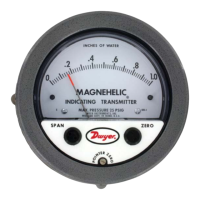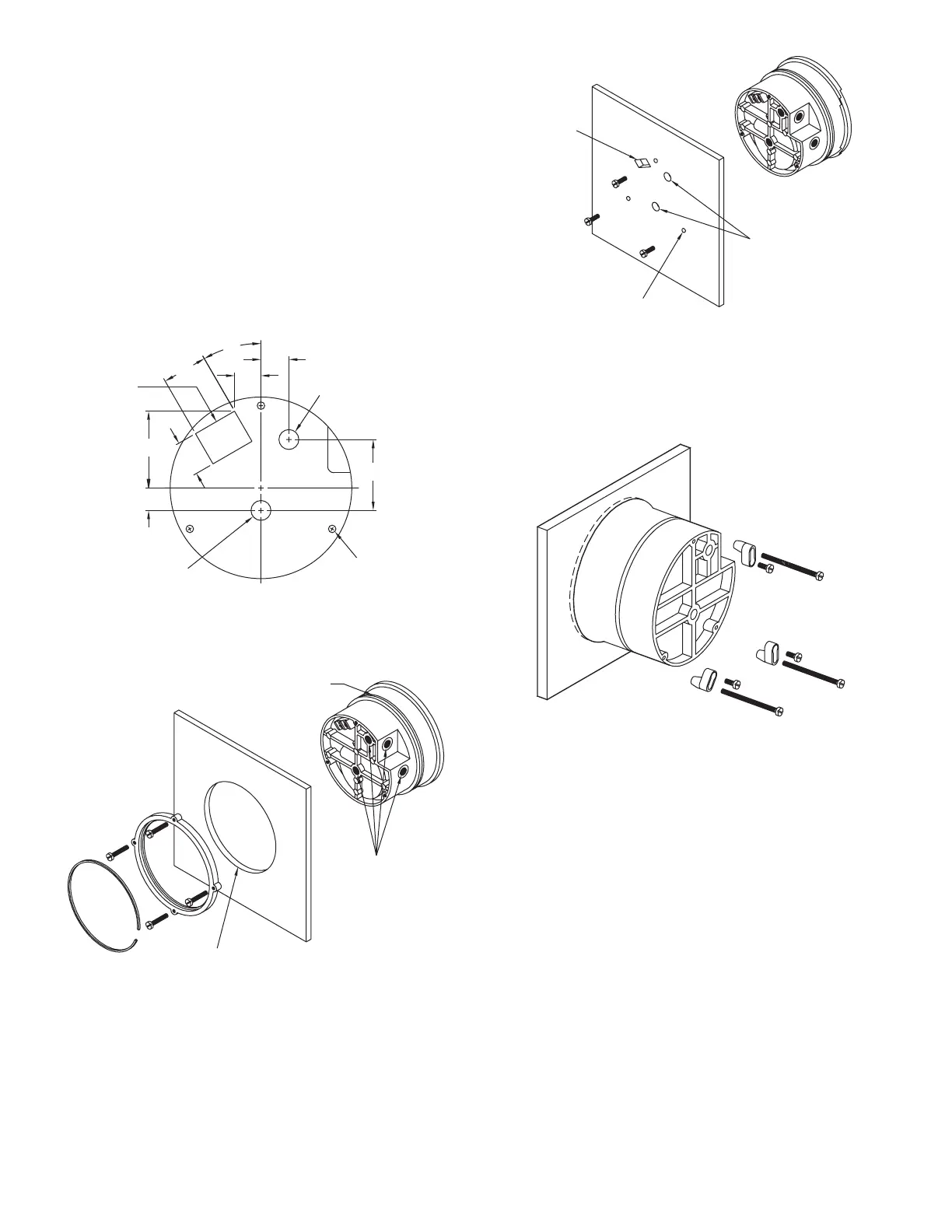INSTALLATION
1. LOCATION: Select a location where the temperature of the unit will be between
20°F and 120°F. Distance from the receiver is limited only by total loop resistance.
See “Electrical Connections”. The tubing feeding pressure to the instrument can
be run practically any length required but long lengths will increase response time
slightly. Avoid surfaces with excessive vibration.
2. POSITION: All standard models are calibrated with the diaphragm vertical and
should be used in that position for maximum accuracy. If your application requires
mounting in other than a vertical position, be sure to specify this when ordering.
3. PRESSURE CONNECTIONS: For convenience, two sets of 1/8˝ female NPT
ports are available. Plug the unused set with pipe plugs provided. Attach tubing
from positive pressure source to port marked “HI” or from negative (Vacuum)
source to port marked “LOW”. In either case, opposite port must be vented to
atmosphere. In dusty environments, we recommend use of an A-331 Filter Vent
Plug to keep interior of instrument clean. For differential pressures the higher
source is connected to the “HI” port and lower to the ”LOW” port.
4. MOUNTING: The Series 605 Transmitter may be either panel mounted or
surface mounted.
A. PANEL MOUNTING: Cut a 4-3/4˝ or 120 mm dia. hole in panel and insert
the complete unit from the front. Slip on the mounting ring and install the
split snap ring in the groove on the bezel. Seat the mounting ring against the
snap ring and thread the four screws through the tapped holes. Tighten
screws against rear of panel.
B. SURFACE MOUNTING: Drill (3) 3/16˝ dia. holes for mounting screws and
cut (1) 7/8˝ x 1-1/8˝ hole for access to terminal strip as shown in hole
location drawing. Insert screws from rear of panel and thread into tapped
holes on back of transmitter case. If rear pressure connections are to be
used, make 1/2˝ dia. holes located as shown in hole location drawing in left
column.
C. FOR -SS BEZEL INSTALLATION: Provide a 4-9/16˝ opening in panel.
Insert gage and secure with supplied mounting hardware.
5. ZEROING: Once gage/transmitter is mounted in its nal position, check to be
sure pointer aligns with zero on scale, when no pressure is applied and both low
and high pressure ports are vented to atmosphere. To adjust, turn small slotted
screw at center-bottom of gage face. Do not move the larger black knobs labeled
SPAN and ZERO. These are for use only if a calibration check shows the 4-20
mA output signal to need adjustment. See page 3 under heading OUTPUT
RANGING.
PNEUMATIC PRESSURE T
17/32
1-7/8
7/8
1-1/8
11/16
21/32
1-3/4
(3) 3/16 DIA. HOLES EQUALLY
SPACED ON A 4-1/8 DIA. BOLD
CIRCLE FOR SURFACE
MOUNTING
1/2 DIA. HOLE IN PANEL FOR HIG
PRESSURE BACK CONNECTION
WHEN SURFACE MOUNTED
1/2 DIA. HOLE IN PANEL FOR
LOW PRESSURE CONNECTION
WHEN SURGACE MOUNTED
HOLE IN P
ANEL
TERMINAL BLOCK
1-1/8˝ LONG X
7/8˝ WIDE FOR
TERMINAL
STRIP
3/16 DIA. HOLES
FOR MOUNTING SCREWS
TYP. 3 PLACES
1/2 DIA. HOLES FOR
AND/OR MOUNTING

